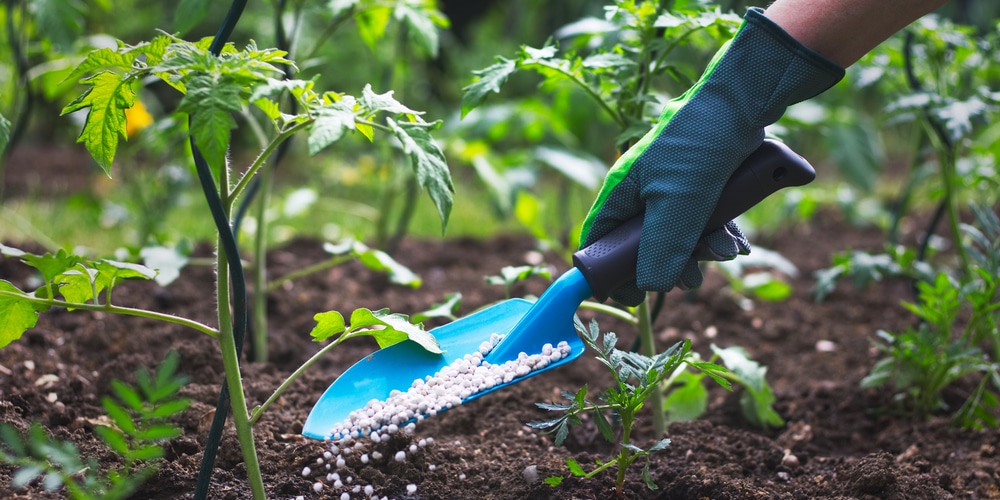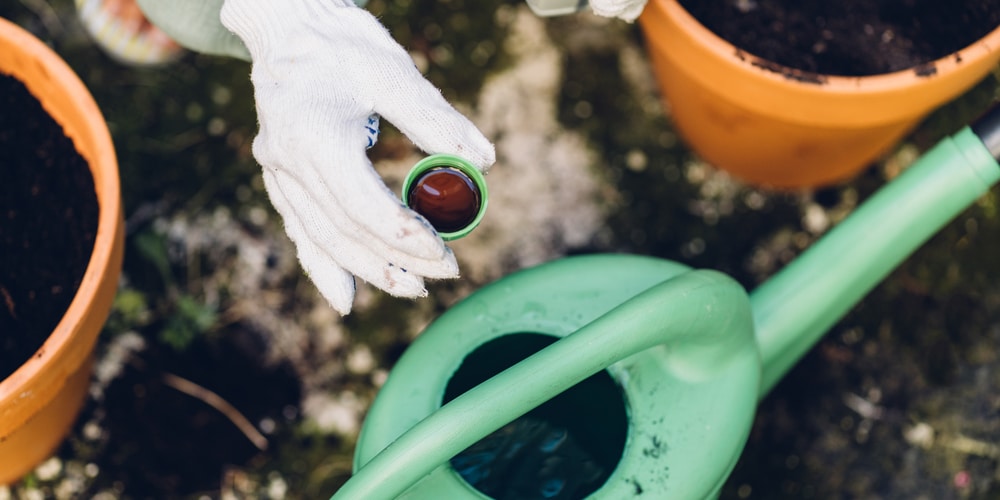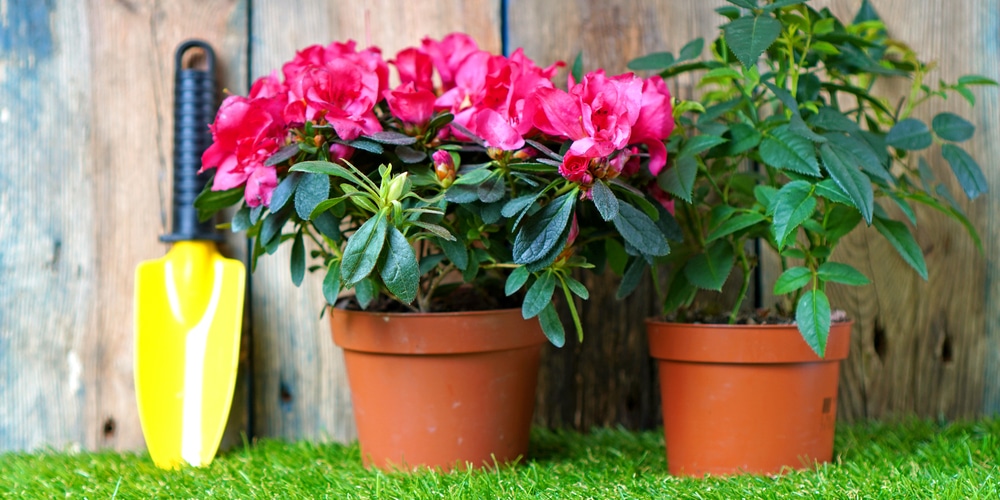This is the time of year when homeowners are thinking about getting their gardens ready. But what about those of us who don’t have a green thumb? Fertilizer can be your best friend when it comes to gardening, and today we’re going to take a look at 14 14 14 fertilizer.
This popular blend of nitrogen, phosphorus, and potassium is often used to promote plant growth. While you may be familiar with the three numbers that make up the ratio, do you know what each one means? Keep reading to learn more!
What is 14 14 14 Fertilizer?
14 14 14 fertilizer is a common blend of commercial fertilizers that combines the three primary nutrients nitrogen, phosphorus, and potassium. It has an NPK ratio of 14 14 14. The number refers to the percentage each element represents in the chemical makeup of the fertilizer – 14% nitrogen, 14% phosphorous, and 14% potassium.
- Provides an excellent balance of nitrogen, phosphorus, and potassium
- Widely available in forms including liquid concentrate, liquid spray, and slow-release granules
- It can be used on lawns to promote healthy grass growth
- It can be any type of container or hanging basket
- It is safe for children and pets as long as it is used as directed on the label
- It does not contain weed killers or pesticides
How to Apply 14 14 14 Fertilizer
You can apply this type of fertilizer in your garden, around trees or shrubs, or on turf. Simply add a slow-release version to the soil where you want to plant new grass or shrubs.
If you play sports on your lawn, you should also fertilize the grass with 14-14-14 each year. This fertilizer is also available as a liquid that can be added to water and sprayed on your lawn. For best results, follow the instructions on the product label.
The best time to apply fertilizer is in early spring, when the temperature rises to above 40 degrees Fahrenheit. Warm-season grasses can be fertilized at this time as it’s the start of their growing season. For cool-season grass, wait until the late fall, just before new plant growth begins. Applying fertilizers at these times gives plants the nutrients they need as they grow, which helps them establish a strong root system for healthy plants.
Are there any Risks Associated with 14 14 14 Fertilizer?
No fertilizer is 100% risk-free, but when used as directed on the label 14-14-14 is generally considered safe. However, it’s essential to avoid overfeeding your plants and lawn. If you have pets or young children, keep them away from areas that have been fertilized for at least 24 hours.
What applications is 14 14 14 Fertilizer good for?
Not all fertilizers are the same. 6 24 24 fertilizer is not going to be the same as 14 14 14 or 10 20 20 fertilizer. So, let’s take a look at applications where 14 14 14 makes sense.
Because it is a balanced fertilizer, many people think that 14-14-14 fertilizer can be used on all plants. However, this isn’t the case as some plants require more of one of the nutrients. 14 14 14 fertilizer is best for use on lawns, houseplants, azaleas, and rhododendrons.
You can buy specific fertilizers with these elements in higher concentrations for plants that require more phosphorous or potassium. For example, if your garden needs extra phosphorous to promote healthy blooming and fruiting, you could choose a 15-30-15 fertilizer that has a higher phosphorous content.
When it comes to choosing the right fertilizer for your plants, 14-14-14 is a balanced option that is safe to use and provides all the essential nutrients for healthy plant growth. With plenty of options available in terms of form and application, this fertilizer is perfect for gardeners who want an easy solution that can be used on a variety of plants and flowers. 14 14 14 fertilizer is perfect for the following plants:
- It can be used on shrubs such as Rhododendrons
- Beneficial for indoor and outdoor Azaleas
- Provides balanced fertilization for house plants
- It can be used for plants in containers and hanging baskets
- Great fertilizer for lawns
What are the Benefits of 14 14 14 Fertilizer?
One benefit to using 14-14-14 fertilizer is that it provides all the nutrients your plants need for healthy growth without overfeeding them. Overfeeding can lead to water pollution and may kill your lawn or garden because it causes root burn, leaf burn, or a build-up of salt, which can burn your plant’s cells.
14 14 14 fertilizer can be used for many different plants and grasses, so you won’t need to buy different fertilizers. There are also many different products available, and 14 14 14 fertilizer comes in various types, including a liquid concentrate that can be added to water, liquid spray, and slow-release granules.
It’s beneficial to use 14 14 14 fertilizer on your lawn as it can help create a healthy turf that’s lush and green year-round. Fertilizing your lawn regularly brings many benefits. Healthy grass is less likely to be infested with weeds as the grass will be dense and able to crowd out weeds.
What are some negative aspects of 14-14-14 Fertilizer?
There is no such thing as a perfect fertilizer, and 14-14-14 is no exception. Despite its benefits, there are a few potential downsides to using this type of fertilizer:
- May cause overfeeding if used incorrectly on plants that don’t need it
- It can be harmful if it comes into contact with plants or pets
- It does not contain weed killers or pesticides
- Strong smell when the liquid concentrate is exposed to air
Where can I Buy 14 14 14 Fertilizer?
Many garden centers stock the most popular brands, but you may also buy 14-14-14 fertilizers online. When you’re looking for a specific type of fertilizer, make sure to read the label and purchase one that is designed for your plants. You can also ask an expert at the garden center for advice on which type of 14-14-14 fertilizer to buy.
Conclusion
14 14 14 fertilizer is a proven choice for home gardeners who prefer an all-purpose fertilizer that provides a balance of nitrogen, phosphorus, and potassium. Ensure you read the label on your container before using fertilizers to ensure they are appropriate for the plants you want to nourish. You may also want to check out 0 0 60 fertilizer as well.
Related article: Feeding Your Grass: Lawn Food Vs. Fertilizer


